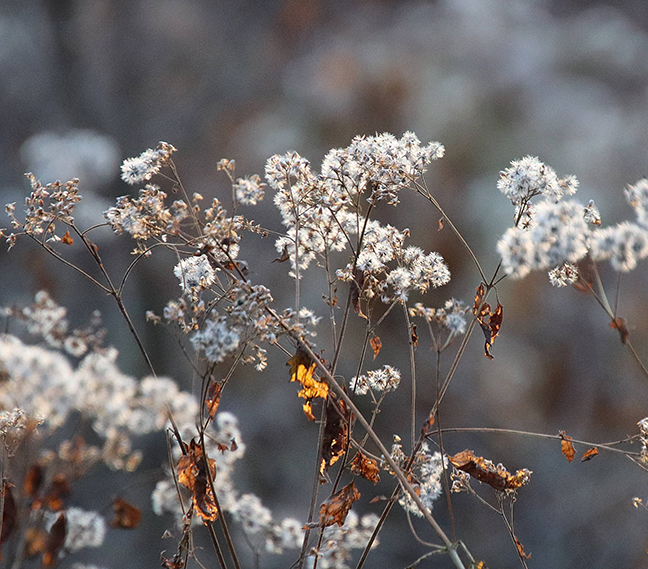Happy Mystery Monday! Can you guess what is pictured in photo below:

The answer to last week’s mystery is pokeweed, Phytolacca americana, pictured in photo #2.

Pokeweed is a native herbaceous perennial in the Phytolaccaceae family that grows 3-8′ high. It is found in riparian areas, oak woodlands, forest edges, fence rows, forest openings, pastures, under power lines, disturbed areas, cultivated fields, parks, and ornamental landscapes.
Common Pokeweed is a long-lived perennial and can survive for years. Their seeds can remain viable in the soil for up to 50 years! The plant has a thick fleshy taproot up to 12′ long and 4′ thick, making adult pokeweed difficult to remove.
The pokeweed’s white, clustered blooms first mature in early Summer and continue into early Fall. The flowers are born in a raceme that usually starts out erect and begins drooping as the fruit develops.
Pokeweed berries are green at first, turning glossy, dark purple. They leave a deep purple-red stain when crushed. The berries are poisonous to humans, containing chemicals that can damage red blood cells. The berries are, however, a favored food for migrating songbirds and a source of food for some mammals. These animals help to distribute the seeds far and wide.
Pokeweed is one of many hosts of the Giant Leopard Moth.
Pokeweed has an extensive history of being used as a food, medicine, herb, dye for clothing, ink for writing, colorant for wines, and much more.
Mystery Monday is sponsored by the Spy Newspapers and Adkins Arboretum.



Young tender pokeweed leaves, when cooked, taste much like spinach.